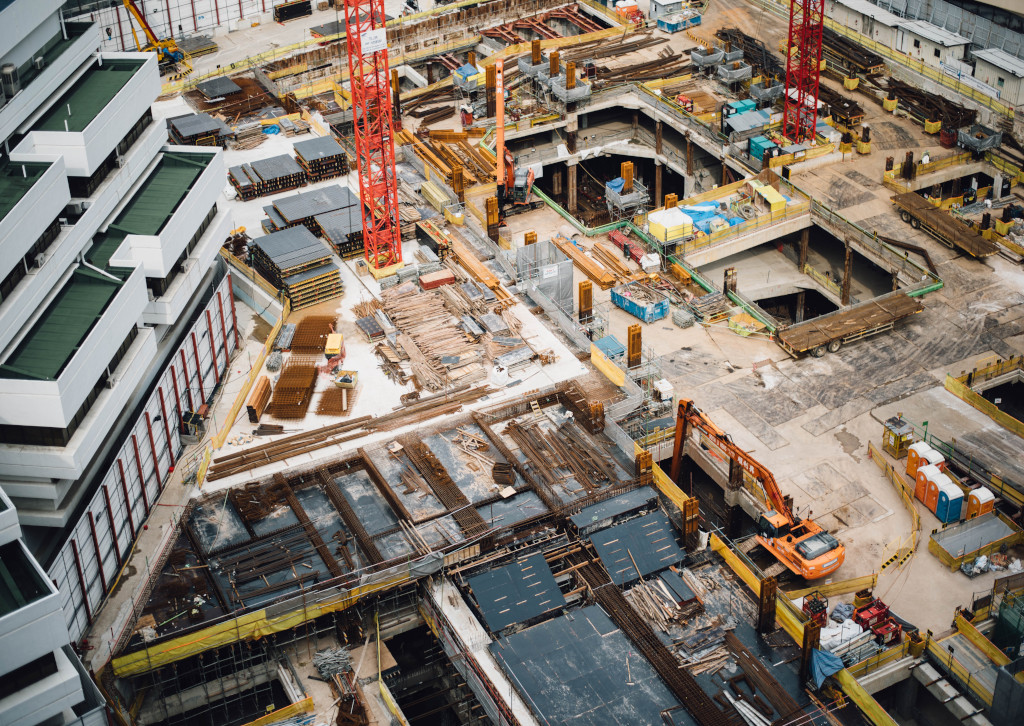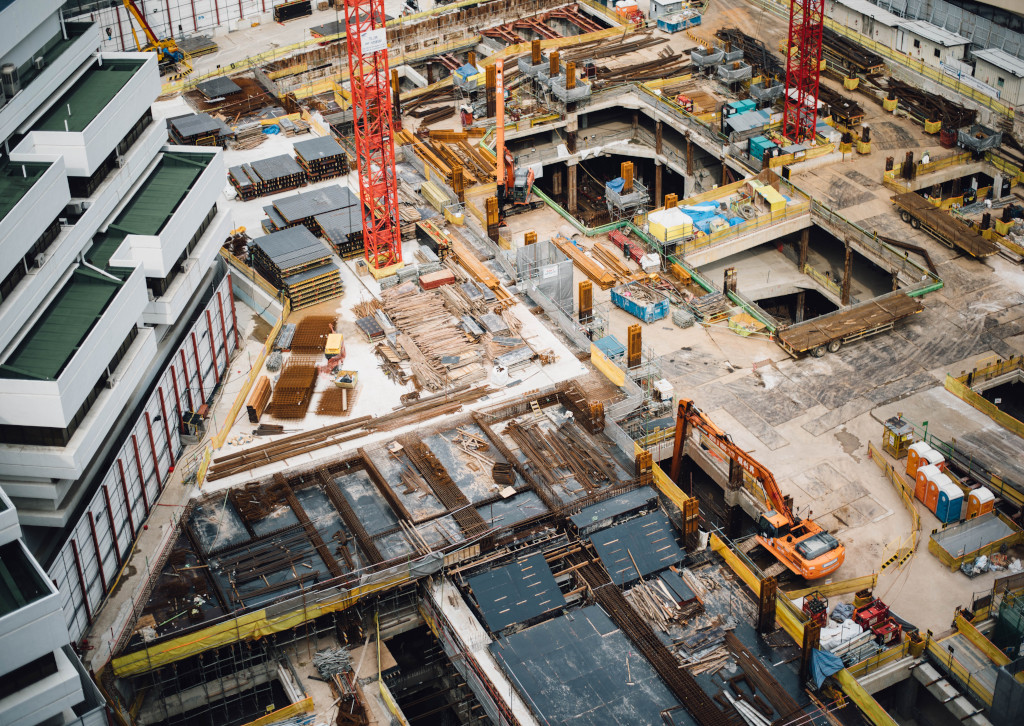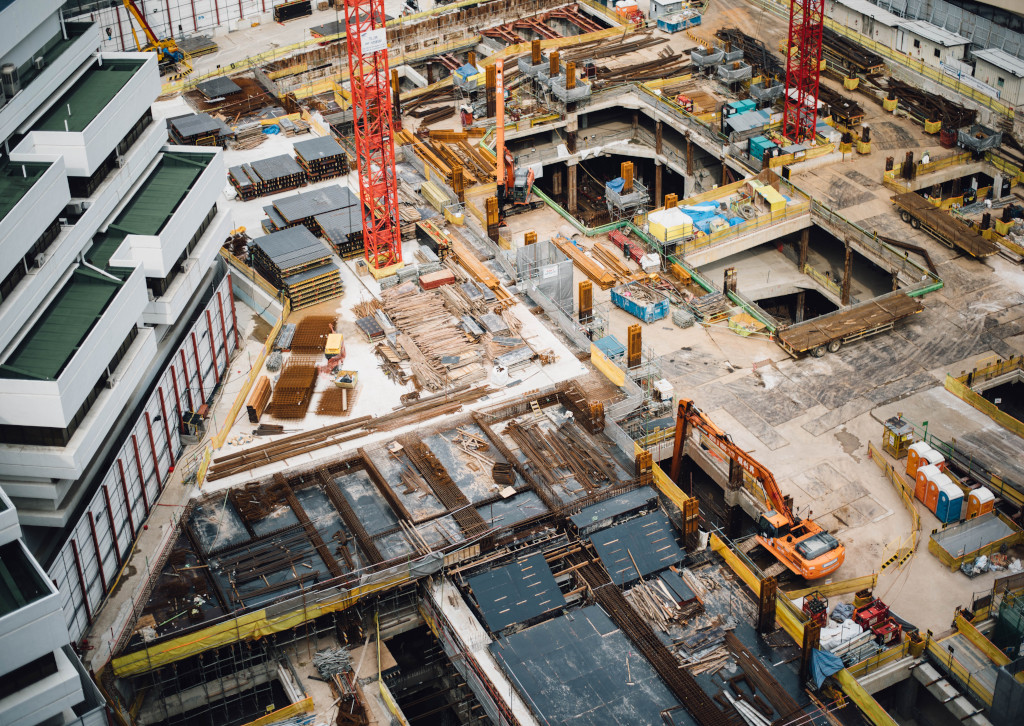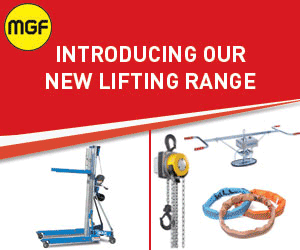Home » Articles posted by Geraldine Neil (Page 25)
Author Archives: Geraldine Neil
Digital Builder Ep 18: 3 Key Takeaways on Prefabrication in Construction

There’s a common misconception around prefabrication—that it amounts to bland, cookie-cutter boxes rolling off an assembly line. But the truth is that prefabrication techniques can allow design teams to produce beautiful, innovative designs that meet the distinct needs of individual clients.
Plus, prefab elements can often be produced more quickly with minimal resources and waste, making it a favorable option for builders and owners alike.
Joining us this week to talk about all things prefab are Nick Coubray, CEO at Howick Ltd., and Amr Raafat, VP of VDC & Technology at Windover Construction. Both guests have extensive experience with prefabrication, and in this episode, we had an interesting discussion on:
The benefits behind prefabrication technology The common myths associated with prefab Some successful real-world examples And how to get started with prefabrication
“Prefabrication combined with other technologies, such as mixed reality, can really enhance the quality of our production in the factory.” — Amr Raafat
(function() { var qs, js, q, s, d = document, gi = d.getElementById, ce = d.createElement, gt = d.getElementsByTagName, id = ‘soun_der’, b = ‘https://embed.sounder.fm’; if (!gi.call(d, id)) { js = ce.call(d, ‘script’); js.id = id; js.src = b + ‘/embed.js’; q = gt.call(d, ‘script’)[0]; q.parentNode.insertBefore(js, q);}})();
powered by Sounder
New Episodes Every Two Weeks
Digital Builder is hosted by me, Eric Thomas. Remember, new episodes of Digital Builder go live every two weeks. You can hear more episodes like this one by subscribing to Digital Builder on Apple Podcasts Spotify Stitcher Google Podcasts, or wherever you listen to podcasts.
You can also subscribe to our email list with the form below so you’re the first to hear when new episodes are released:
MktoForms2.loadForm(“//app-ab10.marketo.com”,”572-JSV-775″,2314,function(form){form.onSuccess(function(values,followUpUrl){var earrings = document.getElementById(‘mktoForm_2314’);
earrings.remove();document.getElementById(‘confirmform’).style.visibility=’visible’;return!1})})>Thank you. We’ll email you the link to the podcast once it’s live..mktoFormSidebar{display:flex!important;justify-content:center!important;flex-direction:column}#mktoForm_2314{display:flex!important;justify-content:center!important;flex-direction:column}#LblEmail{display:none}.mktoFormSidebarTitle{font-family:’Artifakt’!important;font-style:normal!important;font-weight:normal!important;font-size:14px!important;line-height:32px!important;width:fit-content;font-family:’Artifakt Legend’!important;color:#FFFFFF!important;;border-bottom:2px solid rgba(255,255,255,.5)}#mktoForm_2314>div.mktoButtonRow>span>button{background-image:none!important;border:0px!important;background-color:#1858A8!important;font-family:’Artifakt’!important;font-style:normal!important;font-weight:bold!important;font-size:13px!important;line-height:18px!important;text-transform:uppercase!important;color:#1858A8!important}#mktoForm_2314>div:nth-child(3)>div.mktoFieldDescriptor.mktoFormCol>div.mktoFieldWrap>div.mktoLogicalField.mktoCheckboxList.mktoHasWidth.mktoValid,#mktoForm_2314>div:nth-child(3)>div.mktoFieldDescriptor.mktoFormCol>div.mktoFieldWrap>div.mktoLogicalField.mktoCheckboxList.mktoHasWidth{width:auto!important}.mktoFormSidebarText{margin:30px 0;font-family:’Artifakt Legend’!important;font-style:normal!important;font-weight:normal!important;font-size:20px!important;line-height:28px!important;color:#FFFFFF!important}#mktoForm_2314>div:nth-child(2)>div.mktoFieldDescriptor.mktoFormCol>div.mktoFieldWrap.mktoRequiredField,#mktoForm_2314>div:nth-child(2)>div.mktoFieldDescriptor.mktoFormCol,#mktoForm_2314>div:nth-child(2){width:inherit!important}#mktoForm_2314>div.mktoButtonRow>span,#mktoForm_2314>div.mktoButtonRow>span>button{width:100%!important}#mktoForm_2314>div.mktoButtonRow>span>button:after{font-family:’Autodesk-Icon-Font’!important;position:absolute;left:90%;font-style:normal;font-weight:400;font-variant:normal;text-transform:none;line-height:1;-webkit-font-smoothing:antialiased;content:”\e615″}#Email{color:black;background: #ffffff; width:100%!important;padding:0 24px;float:none}#Email::-webkit-input-placeholder{color:black}#Email::-moz-placeholder{color:black}#Email:-ms-input-placeholder{color:black}#Email:-moz-placeholder{color:black}#mktoForm_2314 .mktoButtonRow{display:flex!important;justify-content:center!important}#mktoForm_2314>div.mktoButtonRow>span>button{background-image:none!important;border:0px!important;background-color:#1858A8!important;font-family:’Artifakt’!important;font-style:normal!important;font-weight:bold!important;font-size:13px!important;line-height:18px!important;text-transform:uppercase!important;color:#FFFFFF!important}#mktoForm_2314>div.mktoButtonRow>span{margin-left:0px!important}
3 Takeaways on Prefabrication for Production in Construction
Before diving into the benefits and best practices around prefab, let’s first get clear on what it actually is. Prefabrication refers to the technique of prefabricating assemblies—from whole buildings or entire rooms to much smaller elements and components—in a controlled factory setting. The elements of a building are constructed off-site and then transported to the job site, where they would be assembled.
If you’re curious about prefab and are interested in implementing the practice in your projects, I encourage you to read on. Nick and Amr share their expert takes on prefabrication benefits, myths, and best practices.
1. Debunking common myths about prefabrication
Myth #1: Prefabrication is only impactful for large components or building features
This isn’t necessarily the case. In fact, prefab can also be used to improve the production of a single repeatable feature or very small building elements.
As Amr puts it, “It doesn’t have to be a whole building or a whole room. Prefabrication can be applied to something as small as simple trusses or smaller elements.”
“It doesn’t have to be a whole building or a whole room. Prefabrication can be applied to something as small as simple trusses or smaller elements.” —Amr Raafat
Nick agrees and adds that “Everyone always jumps to volumetric boxes. But like what Amr said, prefab can be applied to something as small as a single component. It doesn’t have to be a fully-finished building and it doesn’t have to be expensive either. It can actually be quite simple, but it’s really about being design-led, rather than actually just making something in a factory.”
Myth #2: Prefabrication only creates unattractive boxes
This is another persistent myth, but untrue. Just because something is made in a factory doesn’t mean it has to be bland or boring.
With the right practices and technologies, you can prefabricate beautifully designed buildings in an efficient and cost-effective way.
“With our prefabrication techniques and our focus on data and technology, we can really produce beautiful designs that could be flexible and respond to client needs,” shares Amr.
He adds, “Our design teams can actually innovate and be more creative in terms of functionality.”
The takeaway? Don’t let old myths and misconceptions stop you from exploring prefabrication. There are a lot of advancements in the realm of prefab that give construction pros more flexibility to design great-looking buildings.
2. Prefabrication unlocks serious production potential
Prefabrication can benefit the entire project and team in a number of ways. Here are the key advantages discussed in the episode.
It saves money. Since prefabrication happens in a factory or manufacturing site, you have more control over your environment, schedule, and timeline. Having a handle on all these things helps minimize unexpected costs.
In addition, prefab enables automation in a factory setting, resulting in fewer errors and labor-hours, so you can keep your costs in check.
No weather delays. Prefab allows projects to be weather-independent. Building something in a controlled environment helps you avoid weather-related and other external disruptions, so projects can be completed faster.
Environmentally friendly. Prefabrication leads to fewer errors and delays, which also means lower energy consumption and less waste — particularly when used with other technologies.
“Prefabrication combined with other technology, such as mixed reality, can really enhance our production in the factory with great quality. What I love about the machinery and the prefab concept is that this machine produces almost zero waste,” says Amr.
Increased quality. Prefab technology and automation guarantees that materials are produced with consistent quality. “Prefab allows you to better control quality. All the BIM data in Revit is carried over into manufacturing, so what you created is exactly what was modeled and approved by the design team,” adds Amr.
Improved safety. Working in a controlled environment means strict safety procedures can be enforced. This is especially important when there are social distancing measures in place. And since the work happens inside a factory site, employees encounter fewer job site-related hazards and unexpected events.
More flexibility. Because components are prefabricated off-site, it’s easier to transport, assemble, and disassemble different elements. This gives you more flexibility when it comes to implementing design changes or relocating materials from one location to another.
3. Start small, but with real projects
Thinking of getting started with prefab? Nick and Amr recommend starting small—but doing it with real projects, so you can learn and improve as you go.
“What I would suggest to people is to start small. Start a single component, like a 2D panel. Then it’s easy to transport to the job site,” says Nick.
He continues, “[with prefab,] the first thing people jump straight to this massive volumetric plant — something like a car factory and a hundred thousand square feet. In reality, what we see is most people begin with a small factory — like a 3,000 square feet facility with a single machine in it.”
“Everyone always jumps to volumetric boxes — or fully furnished units — whereas it can be as small as a single component.” —Nick Coubray
When you’re starting out, you need to ensure that “you have the right data and model,” according to Amr. “You can translate and unify it with manufacturing technologies and techniques.” This is an important consideration as these things will be the foundation of your unified building approach.
Implementing prefabrication successfully requires strong skills and knowledge around BIM and coordination, so it’s recommended to hire team members accordingly. You need the best people who can ensure that all your prefab elements will fit perfectly on-site.
Catch the Full Episode of Digital Builder
Amr and Nick go even further into the ins and outs of prefabrication and how you can implement it successfully. Tune in to the latest episode and discover the best practices and technologies you can use to make prefab work in your business.
Apple PodcastsSpotifyStitcherGoogle Podcastsor wherever you listen to podcasts
The post Digital Builder Ep 18: 3 Key Takeaways on Prefabrication in Construction appeared first on Digital Builder.
Did you miss our previous article…
https://www.drupalcamppa.org/?p=187
Seven win £14bn next-generation Scape frameworks
Scape has named its seven favoured contractors to deliver up to £14bn of projects through its next-generation suite of construction frameworks.
Graham, Kier, McLaughlin & Harvey, Mace, Morgan Sindall, Sisk and Willmott Dixon have been appointed to deliver the Scape Construction framework for England, Wales and Northern Ireland, worth up to £12bn.
In addition, Morgan Sindall, Kier and McLaughlin & Harvey will also deliver the £2bn Scotland Construction framework. Each partner will be supported by an extensive local supply chain.
The overhaul of Scape frameworks sees previous incumbents Lendlease, Robertson and Wates drop out, making way for new commers Mace, Sisk and Graham
Scape frameworks – total spend £14bn
England, Wales & Northern Ireland – Project value £75m+
Mace, John Sisk
England & Wales – Project value: £7.5m – £75m
Morgan Sindall, Willmott Dixon
England & Wales – Project value: up to £7.5m
Kier, Morgan Sindall
Northern Ireland – Project value: £7.5m – £75m
McLaughlin & Harvey
Northern Ireland – Project value: up to £7.5m
Graham
Scotland – Project value £7.5m-plus
McLaughlin & Harvey, Morgan Sindall
Scotland – Project value up to £7.5m
Kier, Morgan Sindall
The four-year net zero-ready public works frameworks will accelerate the delivery of new-build and refurbishment projects of all values from September 2021 and 2025.

With close alignment to the government’s Construction Playbook and a focus on climate action response via the built environment, the suite of frameworks is intended to offer a better way to build and refurbish the public estate, whilst stimulating local economic activity.
The frameworks have been carefully designed to enable clients to benefit from industry transformation, with consideration towards digital construction, platform design and modern methods of construction.
Clients to benefit from several innovative features
A unique parallel lotting structure, offering a choice of two contractors while retaining the free early engagement and direct award.A new lifecycle contract form, supporting clients with energy conservation and the operational efficiency and performance of their assets beyond the construction phase for up to five years. The new feature, which completes the frameworks’ ‘net zero ready’ offer, will help to build and validate a client’s business case for low carbon buildings, and address the historic performance gap between design and in-use building performance.A new commercial model that includes a standard pricing template for greater transparency. Contractors will also commit to 19-day (or better) payment terms for their supply chain partners.Enhanced tailoring of project KPIs and success criteria for every project, leveraging the Construction Innovation Hub’s Value Toolkit to define success for the client.Support from SCAPE’s dedicated framework management team, with performance in delivery measured against market-leading benchmarks for environmental performance, sustainability, social value and the use of local supply chains.


Did you miss our previous article…
https://www.drupalcamppa.org/?p=182
£40m Preston leisure scheme funding deal
Long-awaited plans to revamp Preston city centre with a £40m cinema and leisure complex will finally move to construction after councillors agreed a funding package for the project.
The new development, called ‘Animate’, will be located on the site of the former indoor market and will feature an eight-screen cinema and bowling alley along with five new restaurants and bars, a street-food hub, a car park, and new public square.
The scheme is being developed in partnership with Maple Grove Developments, part of the Eric Wright Group.

Negotiations with anchor operators for the cinema and bowling alley are at an advance stage, alongside strong interest for the restaurant units.
Subject to planning permission being granted, it is anticipated construction work on the project could begin in 2022 with the complex opening in spring 2024.
Councillor Matthew Brown, Leader of Preston City Council, said: “This is a really positive step forward in our plans to bring this exciting development to Preston. The new development will breathe life into the city centre and reinforce the Harris Quarter as a premier cultural and leisure destination in Lancashire.”

Andrew Dewhurst, director of Maple Grove Developments, said: “We look forward to taking the development to the next stage and submitting a planning application this autumn.”
The development is one of six major projects planned under Preston’s Harris Quarter Towns Fund Investment Programme, for which the city was awarded £20.9m from the government’s national Towns Fund initiative in March.


Cost of skilled site labour jumps 3.6% in one month
The cost of skilled labour on site increased by 3.6% last month as inflationary pressures cranked-up in the construction supply chain.
New payroll data from Hudson Contract show average weekly earnings for self-employed tradespeople rose to £904 during July, handing them an extra £124 over the month.
In the East Midlands labour costs hit an all-time weekly high of £1,014 with demand driven by new regeneration, housing and infrastructure projects.

Ian Anfield, Hudson managing director, said: “The housing market is booming with the price of the average UK home increasing by nearly £25,000 over the last year.
“We expect strong demand for new housing and renovation schemes to continue for the foreseeable future. The government is committed to big infrastructure investments as part of its ‘levelling up’ agenda, which is adding to confidence in the sector.
“The challenge for construction firms will be in managing rising costs caused by shortages in building materials and skilled labour.

“We encourage ministers to consider how the industry can increase access to skilled freelancers from Europe under the new immigration system. Self-employed subcontractors make up the most productive and flexible pool of resource in the industry and Britain needs them to deliver these projects on budget and on time.”
Hudson Contract is the UK’s largest provider of tax status and employment contract services to the construction industry and supplies more than 2,500 companies across England and Wales.



Did you miss our previous article…
https://www.drupalcamppa.org/?p=169
Midgard wins £70m Manchester private rental tower
Build to rent specialist Packaged Living has picked JRL-owned main contractor Midgard to build its high-rise scheme of 352 flats in the developing Piccadilly East area of Manchester.
‘The Castings’ scheme consists of four stepped building elements rising to 25 storeys with smaller components at 7, 14 and 20 storeys.

Each building element will have a different coloured brick envelope
The 32-month project to be built on a one-acre site on Heyrod Street near to the planned HS2 station has been designed architect CallisonRTKL, with support from Arcadis, M&E engineer Crookes Walker and Curtins.

It will include a mix of studio, one-, two-, and three-bedroom apartments, as well as 10,000 sq ft of retail and amenity space, a public square and car park.
Hertfordshire-based Midgard will soon start site clearance of two low-rise brick warehouses following approval of its demolition plan.

Mark Woodrow, joint managing director of Packaged Living said: “The Castings is the next exciting BTR scheme in our pipeline, which is now delivering over 3,000 homes in the multi-family sector across the UK.
“The scheme represents a fantastic opportunity to create next-generation homes developed by an experienced team, at a time where vital investment is needed into our city centres.”


Did you miss our previous article…
https://www.drupalcamppa.org/?p=162
Groundwork vets hit by white finger outbreak
Civils contractor Peter Duffy Ltd has been fined £40,000 after multiple employees were diagnosed with Hand Arm Vibration (HAVS).
Leeds Magistrates’ Court heard that the company reported seven cases of HAVS between November 2016 and August 2018.
All of the workers involved had been carrying out ground works involving vibrating tools. Many of them had been working in the industry for over 20 years.

An HSE investigation found that in 2016 the company contracted a new occupational health provider to replace their existing one.
The diagnosis of the workers’ conditions resulted from these changes. Prior to the new company taking over the contract, there was no suitable health surveillance in place to identify HAVS.
Peter Duffy Ltd of Wakefield pleaded guilty to safety breaches and was fined £40,000 and ordered to pay £3,919 in costs.

Speaking after the hearing, HSE inspector Chris Tilley said: “The company should have undertaken a suitable and sufficient risk assessment to identify the level of vibration employees were exposed to throughout their working day and then put in place appropriate control measures.
“Furthermore, the company should have put in place suitable health surveillance to identify HAVS in their workforce.”


Did you miss our previous article…
https://www.drupalcamppa.org/?p=156
Homes England pumps £40m in Watford retirement scheme
Homes England has injected £40m of funding into retirement homes developer Audley Group’s planned Watford Riverwell scheme in Hertfordshire.
The loan is one of the first for the older living sector from the £4.5bn Home Building Fund and will accelerate the construction of 255 mid-market retirement homes.
Balfour Beatty has secured a £68m contract from Audley Group for the mix of one- and two- bedroom apartments.

The firm will also lead the delivery of communal facilities that include swimming pool, restaurant, a health club and a multi-purpose village hall that will be surrounded with green spaces and parking.
Balfour Beatty will manufacture 180 apartment balconies offsite, thereby reducing the risk of working at height and improve the overall project efficiency.
The early works at the site are already underway and the main construction works are slated to be completed in 2023.

Peter Denton, Chief Executive at Homes England, said: “Our loan directly addresses market funding challenges due to the pandemic and highlights our commitment to ensuring diverse communities.”
Nick Sanderson, CEO, Audley Group said: “The transaction with Homes England is an important milestone for the retirement living sector.
“A coming of age. Government backing underlines the importance placed on increasing provision in the retirement living sector and developing more innovative housing solutions.

“Our aspiration to transform retirement is shared with both Homes England and BlackRock Real Assets and this will be the focus as we look to the future.”

Mayfield’s first Retirement Village will be built near Watford General Hospital.
The development is a cornerstone to the wider Riverwell regeneration scheme in what is a priority location for the agency, allowing it to help deliver more ambitious plans.
The project also incorporates elements of Modern Methods of Construction, covering build and project management activities.


Did you miss our previous article…
https://www.drupalcamppa.org/?p=148
Keltbray brings down 198 metre power station chimneys: Video

Keltbray completed the latest major demolition job at the former Ferrybridge ‘C’ Power Station in West Yorkshire on Sunday.
A single ‘blowdown’ saw the removal of the two chimney stacks, the main boiler house, and Bunker Bay.
At 198-metres high, the two chimney stacks were the tallest structures at the Ferrybridge site. This blowdown follows the successful demolition of a cooling tower at the site in July 2019 and four further cooling towers in October of the same year.
Keltbray carried out the blowdown using controlled explosives, with a 250-metre exclusion zone being put in place to ensure safety. In addition, nearby homes were evacuated for a short time with Keltbray and site owner SSE engaging with residents throughout.
Bobby Ellis, Keltbray Senior Project Manager, Demolition & Construction said: “This morning’s blowdown was a success. The demolition was months in planning and marks another major milestone in history, not only in Ferrybridge but in the UK in general.
“Keltbray is committed to being considerate to the communities in which we operate. As well as engaging with local residents, we put in place comprehensive ground monitoring to ensure the surrounding structures were unaffected by the blowdown, and we’re pleased to report that the activity went ahead safely and efficiently.
“The demolition activities are part of SSE and Keltbray’s ongoing commitment to be low-carbon and focus on renewable energy, in line with the UK’s ambition for net zero carbon emissions by 2050. I’d like to say a massive well done and thanks to the project team for all their hard work. Also thanks to the local community for their patience and cooperation.”
SSE Group Energy and Commercial Director, Martin Pibworth said:“This blowdown represents a major milestone in our decommissioning of Ferrybridge ‘C’ and is another special and poignant moment for the local community, with the power station playing a major role in so many people’s lives.
“As the UK looks to lead by example in tackling climate change, SSE is committed to driving the transition to a net zero future with a core focus on renewable energy, backed up by cutting-edge, low-carbon power stations.
“This latest blowdown was many months in planning, and we have worked closely with local residents, Wakefield Council, West Yorkshire Police, the Highways Agency and the Civil Aviation Authority to ensure a safe and efficient demolition.”
Did you miss our previous article…
https://www.drupalcamppa.org/?p=145
Contract race starts for latest £115m stretch of A9 Dualling
Transport Scotland has officially started bidding for the £115m A9 Dualling: Tomatin to Moy project.
A contract notice is now live here launching the competition to select the main construction contractor to dual the next phase of the A9.
Minister for Transport Graeme Dey, said: “Creating employment and training opportunities that benefit the people and communities surrounding this project is a key focus for this significant investment in Scotland’s infrastructure that intends to deliver improvements that bring economic, social and environmental wellbeing to the area.

“This new construction contract will help deliver our shared vision for Scotland – a sustainable, inclusive, safe and accessible transport system, helping deliver a healthier, fairer and more prosperous Scotland for communities, businesses and visitors.
“It will also set out new aspirations for carbon reduction in construction and revitalise employment opportunities through a wide range of skills and training initiatives and educational engagement, throughout the duration of the construction phase.”
Transport Scotland anticipate that the contract for the third section of the A9 Dualling will be awarded in the second half of 2022.


Did you miss our previous article…
https://www.drupalcamppa.org/?p=140
Highways England gets new name and CEO

Highways England has changed its name again as its new chief executive was confirmed.
Nick Harris is the new full-time leader of the government company which builds and operates the country’s motorways and major A-roads.
Harris has been acting chief executive since taking over from Jim O’Sullivan in February.
Highways England will also now be known as ‘National Highways’ which “reflects the new focus the company has on delivering the government’s £27bn strategic roads investment programme, while also continuing to set highways standards for the whole UK.”
The last rebranding of the company was from the Highways Agency to Highways England in 2015.
Highways England Chair, Dipesh J Shah said: “Nick’s steady hand throughout the last few months has established a solid foundation to help us on our journey to transform how we work with our supply chain, how we deliver our net zero carbon and how we realise our digitalisation ambitions.”
Harris said: “I am pleased to be taking up the reins at such an exciting time. We have achieved a great deal and there is still more to be done.
“As we deliver the second roads investment strategy ensuring the safety of all road users, the delivery of our work and the benefits to our customers remains at the centre of our organisation.”
Transport Secretary Grant Shapps added: “Nick will be an excellent CEO and I’m looking forward to continuing to work closely with him as we build back better across the country.
“Nick will steer Highways England into an exciting new chapter, as it evolves into National Highways and delivers on our £27bn plan to improve our roads and make journeys safer, smoother and greener.”
Did you miss our previous article…
https://www.drupalcamppa.org/?p=137